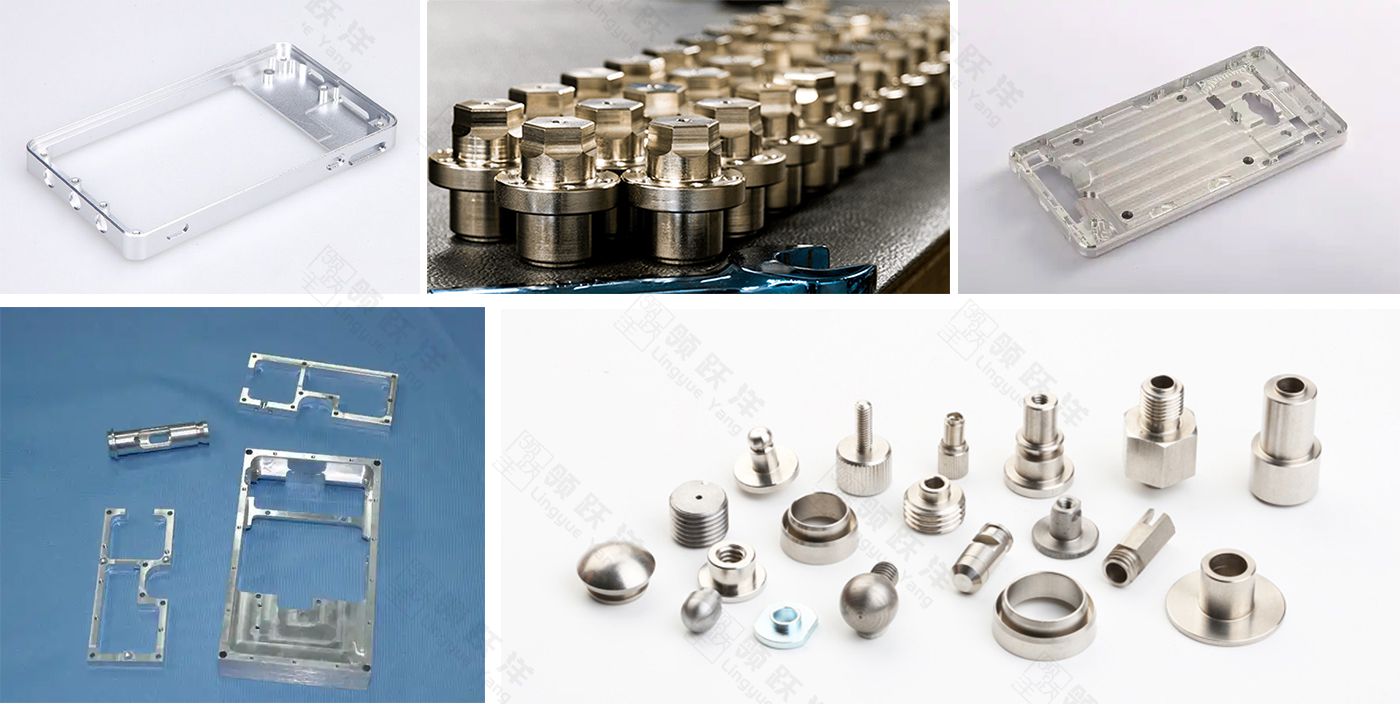+86 192 3098 1308 jaycee70224@163.com +852 9308 6746
As global manufacturing continues to evolve, CNC drilling services have become a critical component in precision engineering. From aerospace and automotive to electronics and heavy machinery, accurate hole placement and repeatable drilling quality are essential for product performance and assembly efficiency.
The integration of CNC drilling machines into modern production lines enables manufacturers to achieve levels of accuracy and consistency that manual or conventional drilling cannot match. This technology—part of the broader CNC machining family—allows complex drilling patterns, variable hole depths, and multi-material processing with outstanding speed and precision.
At Ling Yueyang, we combine state-of-the-art CNC equipment with years of manufacturing experience to deliver precise, efficient, and reliable drilling solutions.
In today’s fast-paced industrial world, CNC drilling has become one of the most essential machining processes for producing precision holes in metal, plastic, and composite materials. With the increasing demand for accuracy and efficiency, manufacturers across industries are shifting toward computer numerical control (CNC) technologies that ensure consistent quality and reduced production time.
Compared with traditional manual drilling, CNC drilling machines operate automatically according to pre-programmed instructions, significantly minimizing human error. As a result, they have become indispensable in sectors such as aerospace, automotive, electronics, and heavy machinery.
CNC drilling is a subtractive machining process in which a computer-controlled spindle drives a rotating drill bit into a material to create accurate holes with specified diameters and depths. It’s often used in combination with milling or tapping operations to form part features for mechanical assembly or fluid flow.
The CNC drilling process involves rotating a cutting tool—typically a drill bit—against a stationary workpiece to create cylindrical holes. What makes CNC drilling exceptional is its ability to handle multiple axes of movement, which allows for highly precise and repeatable drilling patterns.
The workflow begins with a CAD (Computer-Aided Design) file that defines the drilling layout. This data is then translated into a CAM (Computer-Aided Manufacturing) program, which directs the CNC machine to perform the drilling operations automatically. The system controls the spindle speed, feed rate, and drilling depth—ensuring tight tolerances even in mass production.
The process begins with digital modeling. Engineers create a 3D CAD design, then convert it to a CAM file that defines each hole’s position, diameter, depth, and drilling speed. Optimizing feed rate and spindle speed ensures smooth cutting and long tool life.
Proper setup determines the success of any CNC drilling service. The workpiece is secured, reference points are calibrated, and the correct drill bits—carbide, HSS, or coated types—are chosen based on material hardness and hole specifications.
During operation, the CNC machine guides the spindle and drill bit to the programmed positions. High-speed and multi-axis capabilities allow for angled holes, countersinking, reaming, or threading, all within one automated sequence.
Each finished part undergoes dimensional verification to confirm hole alignment, diameter tolerance, and surface finish. Ling Yueyang uses precision measuring tools and inspection reports to ensure every component meets client expectations.
CNC drilling machines support various drilling techniques depending on the application:
● Spot Drilling: Creates a small indentation to guide the main drill bit.
● Peck Drilling: Used for deep holes, allowing chips to clear between strokes.
● Counterboring and Countersinking: Provide smooth surfaces for bolt heads and fasteners.
● Tapping and Reaming: Common for threading and finishing holes with high precision.
Each of these operations contributes to producing reliable and uniform components, particularly in high-precision industries.
CNC drilling is compatible with a wide range of materials, including:
● Metals: Aluminum, stainless steel, brass, and titanium.
● Plastics: Acrylic, ABS, and polycarbonate.
● Composites: Fiber-reinforced polymers and carbon fiber materials.

The choice of material often depends on the mechanical requirements of the final product. For instance, Ling Yueyang’s CNC drilling services utilize advanced machinery capable of handling both lightweight alloys and hardened steels—ensuring outstanding results across diverse applications.
CNC drilling plays a vital role in numerous sectors:
● Aerospace Components: Engine parts, brackets, and structural fasteners.
● Automotive Manufacturing: Cylinder blocks, transmission housings, and brake components.
● Electronics Industry: Circuit boards and precision enclosures.
● Industrial Equipment: Custom machinery and hydraulic components.
The versatility of computer-controlled drilling systems allows companies like Ling Yueyang to deliver customized solutions that meet exact project specifications.
● High Accuracy: Achieves tight positional tolerances and uniform hole depths.
● Repeatability: Perfect for high-volume production with consistent results.
● Versatility: Supports varied materials and hole types (blind, through, stepped, or countersunk).
● Speed and Efficiency: Multi-axis drilling reduces setup time and boosts productivity.
● Automation and Integration: Works seamlessly with CNC milling or tapping for complete machining solutions.
While CNC drilling is highly efficient, it’s typically limited to circular hole creation. For non-circular or complex cutouts, CNC milling or EDM machining may be required. Additionally, deep-hole drilling demands specialized tools and coolant systems to manage heat and chip removal.
Selecting a capable drilling partner is essential for achieving precision and productivity. Look for providers with modern CNC drilling centers, experienced engineers, and robust quality control systems.
At Ling Yueyang, we combine advanced drilling machinery, skilled technicians, and strict inspection protocols to deliver parts that meet international standards. Whether you require high-speed drilling for aluminum components or deep-hole drilling for steel parts, our team provides a complete, cost-effective solution.
To explore our full range of services, visit www.lyymachine.com and discover how our CNC machining and drilling expertise can enhance your next project.
CNC drilling is an indispensable process in precision manufacturing, providing the foundation for accurate assembly, efficient design, and consistent product quality. As industries continue to demand tighter tolerances and faster production, automated drilling technology remains at the forefront of machining innovation.
With advanced equipment, deep technical experience, and a customer-centered approach, Ling Yueyang continues to deliver reliable CNC drilling and machining services to clients worldwide—helping manufacturers achieve excellence in every detail.